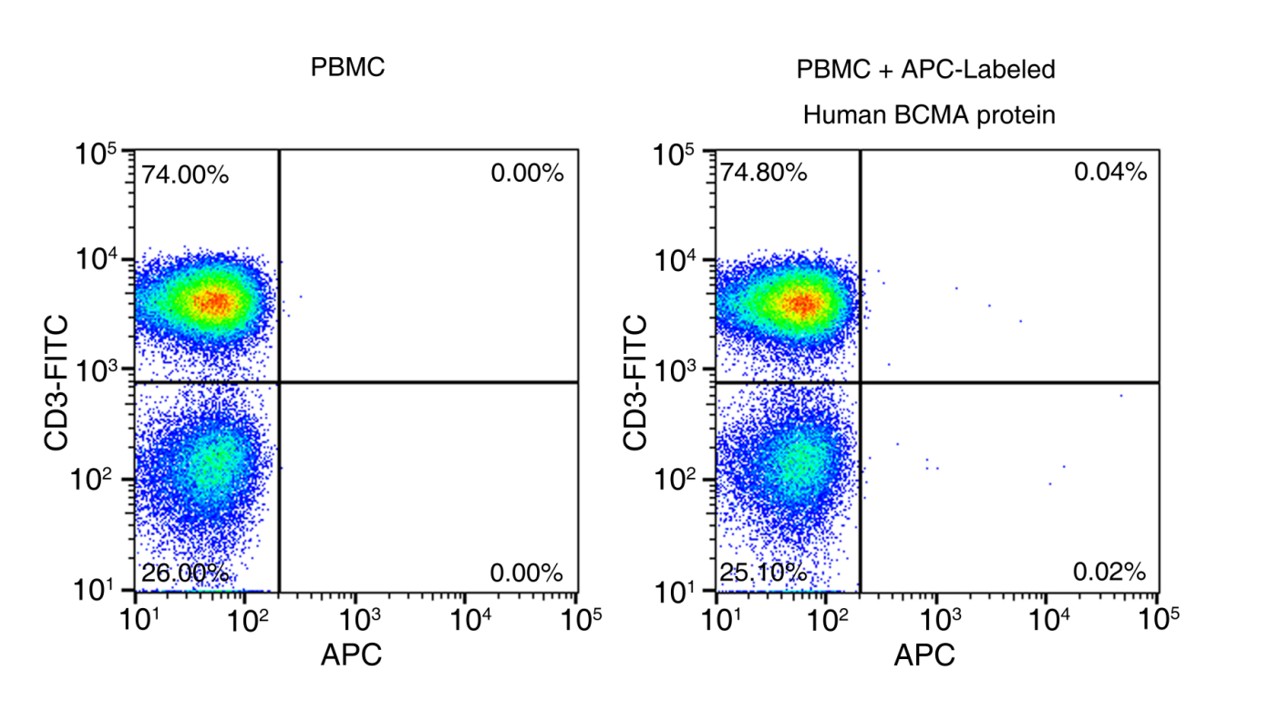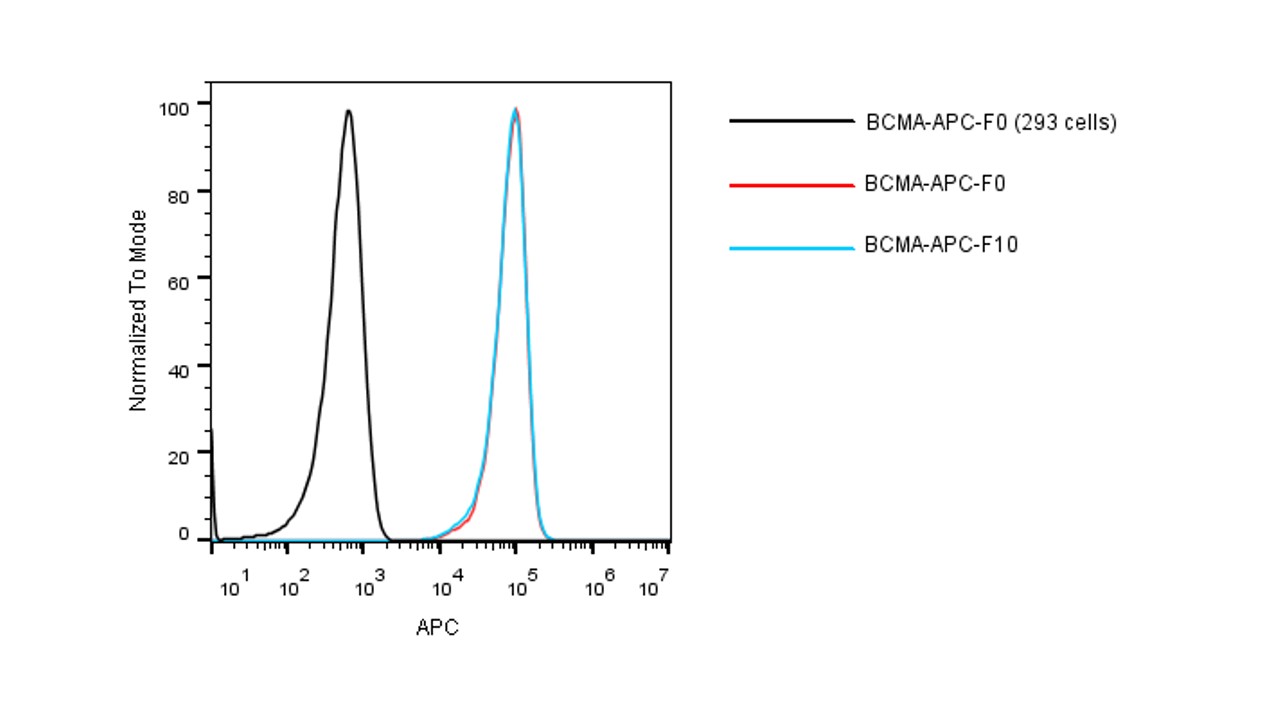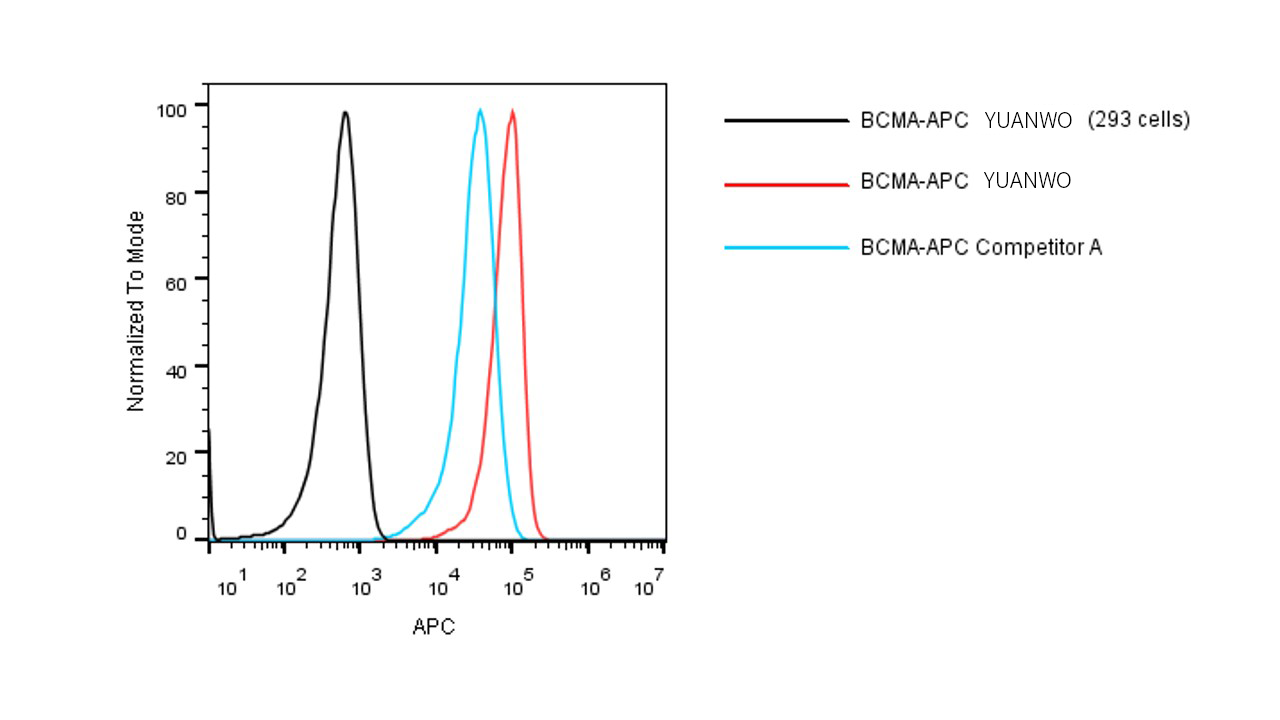

Flow cytometric analysis of anti-BCMA CAR expression. 5e5 of anti-BCMA CAR-293 cells were stained with 100 μL of 1:125 dilution of APC-conjugated human BCMA protein (Site-Specific APC Conjugation, ECD, His Tag, Cat. No. 10620-H86H-SA) and negative control protein. Non-transduced 293 cells were used as a control (left). APC signal was used to evaluate the binding activity (QC tested). |
Binding activity of APC-conjugated BCMA protein to PBMC cells. PBMC cells were stained with FITC conjugated anti-CD3 antibody and APC-conjugated human BCMA protein (Site-Specific APC Conjugation, ECD, His Tag, Cat. No. 10620-H86H-SA) and detected by flow cytometry. FITC signal was used to evaluate the content of CD3+ T cells in PBMCs. APC signal was used to evaluate the non-specific binding activity to PBMCs (QC tested). |
Flow cytometric analysis using APC conjugated BCMA protein. 5e5 of anti-BCMA CAR-293 cells were stained with APC-conjugated human BCMA protein (Site-Specific APC Conjugation, ECD, His Tag, Cat. No. 10620-H86H-SA). Non-transduced 293 cells were used as a control (Black Histogram). The protein exhibited stable performance after multiple freeze-thaw cycles (10 cycles). |
Flow cytometric analysis using APC conjugated BCMA protein. 5e5 of anti-BCMA CAR-293 cells were stained with APC-conjugated human BCMA protein from two vendors (competitor A and SINO). Non-transduced 293 cells were used as a control (Black Histogram). The results demonstrated that SINO’s 10620-H86H-SA has a higher fluorescence intensity than that of the competitor. |
Novak AJ, et al. (2004) Expression of BCMA, TACI, and BAFF-R in multiple myeloma: a mechanism for growth and survival. Blood. 103 (2): 689–94.
O'Connor BP, et al. (2004) BCMA is essential for the survival of long-lived bone marrow plasma cells. J Exp Med. 199(1): 91-8.
Moser K, et al. (2006) Stromal niches, plasma cell differentiation and survival. Curr Opin Immunol. 18(3): 265-70.








